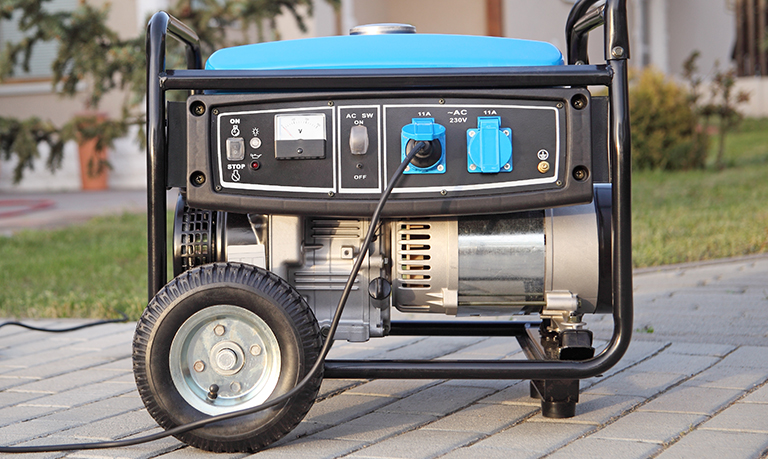Home » Generator Safety
Generator Safety
Run your generator safely this winter
Having a generator on hand in case of an extended power outage is a convenient way to maintain access to electricity, but they also pose serious safety risks if not used properly. From the usual standalone generators to whole-house backups and interconnected systems, we’re here to help you operate safely.
Standard generators
 A regular gas or electric generator is handy to run some of your essentials during an outage. This is the simplest — and cheapest — way to have your own power supply during an outage, but be sure you know how to operate it safely.
A regular gas or electric generator is handy to run some of your essentials during an outage. This is the simplest — and cheapest — way to have your own power supply during an outage, but be sure you know how to operate it safely.
- Consider your needs when purchasing a generator. Battery power stations, or electric generators, offer many of the same features as gas generators without as many potential safety hazards — and no exhaust or noise.
- Read the manufacturer’s safety and operating instructions before use. Follow the instructions for proper grounding carefully, and never plug the generator into a wall outlet.
- Carbon monoxide (CO) is a colorless, odorless, toxic gas present in generator exhaust. To prevent buildup and exposure to CO, never use a generator indoors or in enclosed spaces such as garages, crawl spaces, and basements. Ensure that outdoor placement allows proper ventilation to prevent buildup in occupied spaces.
- Exposure to generator exhaust can cause carbon monoxide poisoning. Install carbon monoxide alarms and check that they are functioning correctly before using your generator.
- Never leave the generator running while you are away, and check on it regularly while it’s running.
- Plug appliances directly into the generator or use grounded, three-pronged extension cords with an amperage rating that meets your intended use.
- Always allow the generator to cool down completely before you refuel, and never try to refuel while it is running.
For more information on using these generators safety, see the OSHA fact sheet.
Generator plug
A professional can modify your circuit breaker so that a portable generator can be plugged into it during an outage and power your home. Doing so requires the addition of a lockout or disconnecting device on the breaker to avoid backfeeding to PEC’s system, which could pose a serious danger to our lineworkers.
Standby generators
If you want to keep your whole house powered automatically during an outage, a standby generator may be right for you. When the power goes out, the generator fires up and automatically supplies power directly to your home’s electrical circuit breaker box. However, because of the way they are installed, these systems come with additional safety concerns.
Before installing a generator that connects to your home’s electric circuits, please read our requirements and call 888-554-4732 if a service modification or meter disconnect is needed. Be aware that it is a violation of the electrical code to connect a generator without a UL-approved open-transition or automatic transfer switch (ATS).
If a generator is online when electrical service is restored, it can become a fire hazard. And improperly installed generators can create hazardous conditions for PEC employees working to restore power or make repairs. A generator connected in parallel with PEC’s distribution network can produce a voltage that is potentially deadly to a lineworker making repairs down the line.
Interconnected generator
Any location with a distributed generation (DG) system with a backup generator intended to power the entire home must have a member-owned automatic transfer switch (ATS) that meets NEC requirements and is approved by PEC during the interconnection process.
For more information, see the Distributed Generation page.